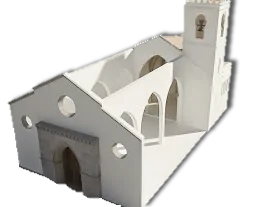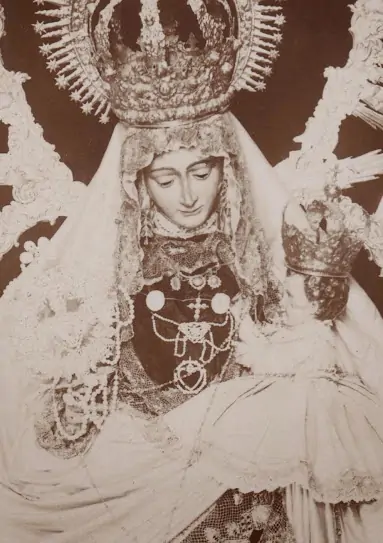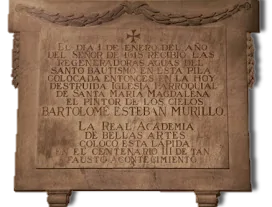The Primitive Parish Church
History
Following the pattern seen in other churches during the Fernando III era, the old parish church of Santa María Magdalena was likely built on the site of an old mosque.
During the reign of King Pedro I, after a strong earthquake shook the city in 1355, it was reconstructed in the Gothic-Mudéjar style, similar to other churches in the city such as Omnium Sanctorum or San Gil.
In a much later description, the temple is described as "moderately large, with a wooden roof, three naves, the middle one being much wider in proportion to the others. The main chapel was made of stone with a Gothic-style vault. The main altar, elevated on a marble step presbytery, was Plateresque in style, full of foliage and ornaments, having replaced the beautiful one from the early 1700s" (FÉLIX GONZÁLEZ DE LEÓN, Artistic Notice of the City of Seville.1844).
On November 1, 1755, during the novena to the Virgin del Amparo, an earthquake from the Lisbon earthquake reached the city around 10 in the morning, damaging over 5,000 houses, including the cathedral and several churches and convents. Neither the church nor the parishioners of Santa María Magdalena suffered any damage, which was interpreted as the protection of the Virgin's Patronage.
As a reminder of the location of the original parish, a plaque in the homonymous square indicates: "Juan Martínez Montañés lies buried in this square, the former parish church of Santa María Magdalena, and had his workshop for his famous sculptures in a house near said temple. The Academy of Fine Arts of Seville of Santa Isabel de Hungría dedicated this tribute to the memory of the illustrious sculptor in the year of our Lord 1957." The renowned sculptor was a parishioner (he lived in the former Calle de la Muela, now O’Donnell) and married there for the second time.
Félix González de León mentions that there were many distinguished patronages and burials in the church, some already unrecognizable by his time, highlighting that of the notable Sevillian writer Abad Gordillo, who passed away in 1644.
Bartolomé Esteban Murillo was also baptized in this church, as indicated by the plaque currently placed on the baptismal font, brought from the old parish church. "On January 1, in the year of our Lord 1618, the painter of the heavens Bartolomé Esteban Murillo received the regenerating waters of Holy Baptism in this font, then located in the now destroyed parish church of Santa María Magdalena. The Royal Academy of Fine Arts placed this plaque on the 300th anniversary of such a auspicious event."
During the Napoleonic invasion, the city was transformed by widening streets and opening new squares, often at the expense of convents and churches. In 1811, the old church was demolished to make way for the current Plaza de La Magdalena. In the same year, the parish moved to the Church of the convent of San Pablo el Real but, after being partially rebuilt, returned to its old temple in 1817. After being definitively demolished in 1842, the parish permanently moved to the current temple following the Dominican convent's disentailment by Mendizábal.
Among the elements from the disappeared parish church, in addition to the baptismal font, are the image of Santa María Magdalena by Felipe Malo de Molina and probably the scene of Mary Magdalene and the holy women with the angel on the morning of the Resurrection, which would have been part of the original main altarpiece.





